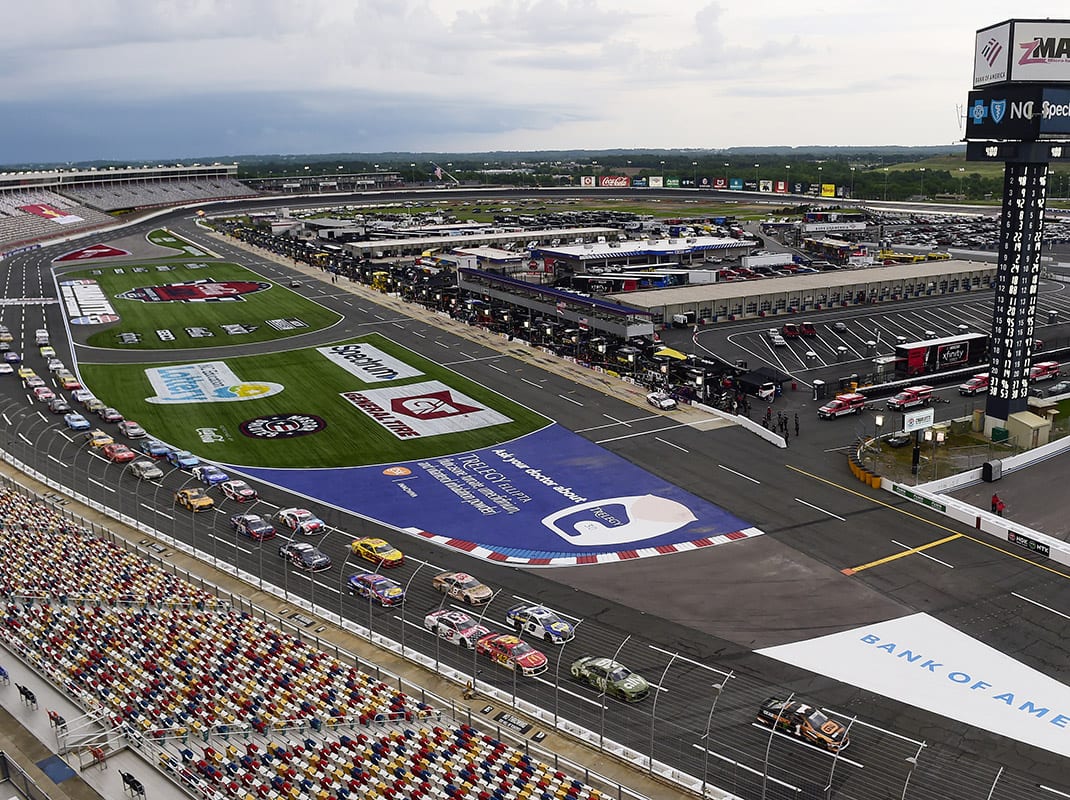In the fall of 1973, OPEC members staged a general boycott of all oil exports to Europe, Japan and the United States. The goal was to raise oil prices around the world and virtually overnight oil became a difficult commodity to obtain.
On Nov. 15, 1973, auto racing executives from NASCAR, USAC, IMSA and NHRA met in Chicago in hopes of finding a way to continue racing. Just 10 days later, President Richard Nixon announced major changes around the United States in hopes of offsetting the crisis.
Nixon ordered all gas stations from coast to coast to close from 9 p.m. Saturday through midnight on Sunday in an effort to conserve energy. With races scheduled for weekend attendance, fans would have difficulty finding gas to return home. Even during the week, there were long lines at the pumps to get limited amounts of fuel. Fans weathered the storm and continued to attend races despite much higher gas prices.
The Federal Energy Office, charged with monitoring fuel usage, placed auto racing seventh on its list of businesses excessively using fuel. Statistics showed fans of other sports, as well as movie theaters and non-essential aviation, consumed more fuel than NASCAR events, greatly helping auto racing’s cause.
The 24 Hours of Daytona at Daytona Int’l Speedway was canceled in 1974 and the distances for the Daytona 500 and other races were reduced. Practice sessions at Daytona were cut from eight days to five.
As a result, NASCAR used 31 percent less fuel for the 1974 season than it did in 1973. Starting fields were also reduced for all Cup Series events that season.
The oil embargo ended in March 1974 and beginning with the Firecracker 400 at Daytona in July, full-race distances were reinstated.
“Auto racing is a highly visible sport and it has a public relations problem inasmuch as we are very vulnerable. Racing wants to be good neighbors,” France said in the Jan. 9, 1974, issue of National Speed Sport News, noting that racing includes stock cars, Indy cars, drag racing and other forms, “but all these types will strive to achieve the goal of a 20 to 25 percent reduction in energy in various ways.”
During the summer of 1998, wildfires devastated central Florida with a vengeance. A record-breaking number of firefighters — more than 10,000 — helped battle 2,200 blazes across the state. The fires forced evacuations of hundreds of thousands of residents and damaged or destroyed hundreds of homes and businesses.
Major interstates were closed to the public for nearly a week. Volusia County, home to Daytona Int’l Speedway, was declared a disaster area by the federal government.
The 1998 Pepsi 400, originally scheduled for July 4 at Daytona Int’l Speedway, was run on Oct. 17. The race, which was the first night race at the famed 2.5-mile track that opened in 1959, was won by Jeff Gordon for Hendrick Motorsports. It was Gordon’s 11th win of the year.
The track was used as a central facility for firemen, utility companies and heavy equipment. Food supplies intended for track concessions were given to first responders around the clock.
“When we moved the 400 to the night, Bill France Jr. and Jim France were concerned about afternoon rain showers disturbing the race,” said John Graham, DIS president in 1998. “It wasn’t rain at all that stopped the first night race. It was those fires and who could have ever guessed that would happen.”
When the Great Recession hit in 2008 and ’09, major corporate sponsorships, the lifeblood of the sport, were difficult to maintain. Long established banks went out of business as stocks on Wall Street plummeted to record levels, including those of the Detroit automakers.
Attendance at race tracks fell dramatically as many American workers lost their jobs. Concern was widespread that the U.S. government taskforce overseeing the restructuring of General Motors and Chrysler could force the manufacturers to withdraw from the sport. Dodge’s presence in NASCAR racing ended in early 2012 after Brad Keselowski won the Cup Series title for Team Penske in 2011.
A decade later, tracks on the NASCAR schedule were still struggling to fill their seats and removed sections of grandstands as a result.
That made it even more ironic when NASCAR was the first sport to resume in the wake of the coronavirus pandemic, albeit without fans in the stands.
